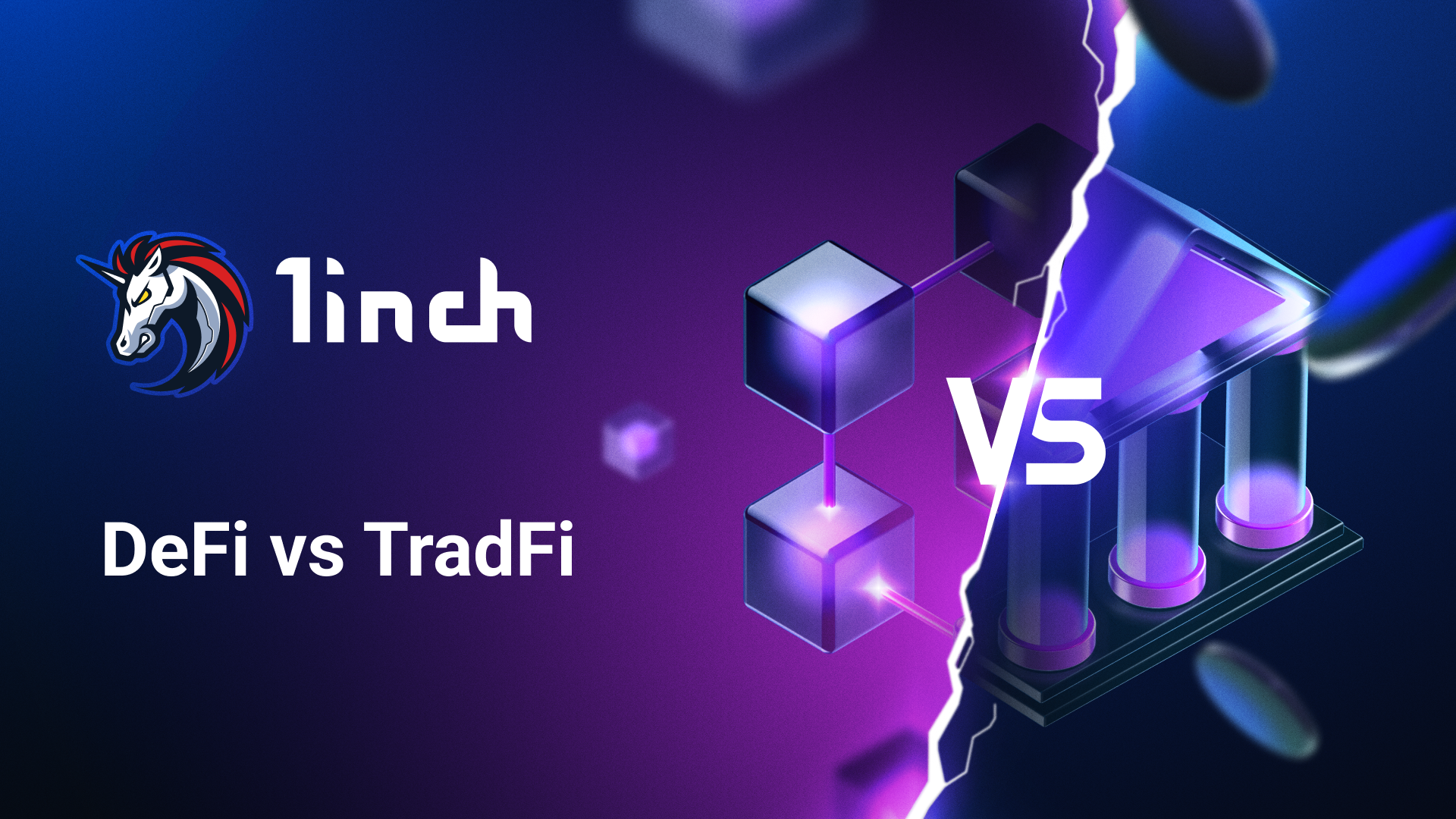How is DeFi different from traditional finance?

DeFi leverages blockchain technology to provide financial services without centralized intermediaries, fostering innovation and offering unique features.
Key takeaways:
Decentralized finance (DeFi) is an emerging digital ecosystem of financial services based on blockchain technology and peer-to-peer interaction.
DeFi offers services similar to traditional finance: currency exchange, lending, borrowing, yield earning, derivatives and more. DeFi has also expanded into game finance - GameFi, - powering its entertaining components. Blockchain games and metaverses have their own token-powered ecosystems or run directly on blockchains.
DeFi involves cryptocurrency and smart contracts deployed by platforms and projects on blockchains.
Brief history
Decentralized finance emerged as a separate sector in 2016 when the smart contracts support introduced by Ethereum made it possible to offer blockchain-based decentralized alternatives to traditional financial services. At that time, multiple projects that launched and built their services on Ethereum started gaining traction.
Traditional finance, also referred to as TradFi, is a state-regulated financial sector in which users’ funds and assets are managed by a central authority. The word traditional refers to a system functioning in this mode for many years. Traditional finance includes the entire banking system, as well as payment systems that involve negotiable instruments. Within traditional finance, authorized institutions provide services for money storage, account creation, exchange, lending, borrowing, trading, investments, stocks and bonds. All of these processes require a financial intermediary to perform financial operations.
Key differences between the DeFi and TradFi approaches
Automation
DeFi: Decentralized applications and platforms are based on smart contracts. These programs autonomously execute transactions when conditions are met. Borrowing and lending are also performed in automated mode.
TradFi: A traditional system cannot automate every process. This applies even to the most basic services - opening banking accounts may still require a personal visit to the office and interaction with a bank employee.
Transparency and privacy
DeFi: Decentralized projects run on public blockchains where transaction data is in public access. At the same time, the user’s personal information is not available to anyone. Users can track real-time transactions through a block explorer.
TradFi: Users cannot track their transactions, as all data is in the company’s closed database. Entities also own detailed information on account holders.
Borders
DeFi: As decentralization is about freedom and being your own bank, an access point to finance does not have any borders.
TradFi: All banking and payment systems rely on authorities in specific territories. The traditional sector limits people by geography and nationality since only some countries’ banks allow all foreign citizens to open an account.
Regulation
DeFi: The lack of regulation can be classified as both a strength and a weakness. There is no perfect approach to the newly formed financial system yet, and each country solves this issue in its own way.
TradFi: Traditional finance is fully regulated. Institutions cannot offer users any privacy. But, at the same time, they offer users guarantees of the security of their assets.
The distinction between features in DeFi and TradFi
Asset custody
DeFi: Users can store their crypto in non-custodial wallets. No one can access and control the user’s funds or private keys (secret encrypted numbers similar to passwords).
TradFi: Since all accounts are offered by centralized entities, the latter hold control over users’ funds. Users can face account blocking or requirements to provide additional documents.
Cross-border transfers
DeFi: Transactions are executed without intermediaries, which makes cross-border transfers fast and cheap.
TradFi: Cross-border transfers are handled through intermediary banks, which affects price and speed and can cause transaction reversals.
Insurance
DeFi: Insurance protocols based on smart contracts offer loss coverage for crypto assets that is similar to traditional finance. DeFi insurance can cover protocol hacks, depegged assets, yield token value fluctuations and risks associated with staking.
TradFi: Insurance is offered on a mass scale. Although it usually only partially compensates the user’s losses, the very existence of insurance provides greater confidence and credibility since deposits are protected by such well-known institutions like FDIC, for instance.
Loans
DeFi: Lending protocols allow for immediate loans with no documents or credit history. They can potentially open up opportunities for the underbanked and unbanked users. But since DeFi lending is all about truthfulness and anonymity, borrowers face high collaterals.
TradFi: Getting a loan from a traditional institution often requires proof of income or credit history.




























